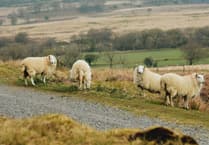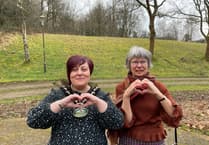Thousands of visitors to Wonderwool Wales next weekend, April 22-23 will have a chance to see a new, short documentary, which reveals the forgotten potential of wool in textiles and the industry’s urgent need for sustainable solutions.
The work of four students from the University of West England in Bristol, Forgotten Fibre delves into the applications of wool in the textile industry and its sustainable uses, as an alternative to synthetics made from plastics.
The students will be attending Wonderwool Wales, the award-winning show that celebrates all that’s great about Welsh wool and natural fibres, at Royal Welsh Showground in Builth Wells to promote their documentary, made as part of their course.
“During the making of the documentary, we discovered that wool is a renewable and biodegradable material, composed of atmospheric carbon,” said Tristan Sherfield, who directed and produced the 10-minute film which he describes as traditionally British with a folk music soundtrack.
“This unique property makes wool a valuable asset in combating the growing damage caused by the expanding clothing and textile industry. Despite its remarkable qualities, wool makes up a meagre one per cent of the global textile market.
“We hope that our film raises awareness of the potential of wool as a sustainable alternative to other materials and the urgent need to prioritise eco-friendly solutions in the industry.”
Tristan says he and fellow students Alex Stevenson, Robert Loud and Maurice Wren were keen to discover why wool has gone from being such a crucial part of our lives to something almost entirely forgotten.
They filmed with Andy Wear and Jen Hunter, who focus on a holistic and regenerative way of farming at Fernhill Farm, Bristol, Marina Skua, a yarn dyer and hand-knit designer based in Wiltshire andDavid Wilkins at Rampishamhill Mill at Beaminster, Dorset.
“In recent years, fast fashion has taken over our textiles and clothing industries, introducing a system more concerned with quantity over quality that pumps out cheaply made garments that are in ‘trend’ one month and out in the next,” added Tristan. “Despite being biodegradable, renewable and natural, wool has seen a huge decline whilst synthetics have taken over. But clothes made from synthetics are just clothes made from plastic and we’re just beginning to see the impact that they are having.
“Plastic microfibres are being shed and sent straight down the drain every time we wash our clothes.
“This combination of low-quality, low-cost garments and their quick production has led to a whole host of issues, including exploitation of both people and our planet. We have become less attached to the clothes we wear and how they are made.
“So, was the answer right there in front of us all along, in the form of wool?”
Jen Hunter believes so. In the documentary, she says: “Wool is right here under our noses and we are not using it.”
Forgotten Fibre can be followed on Facebook, Instagram and Linktree athttps://linktr.ee/forgottenfibredoc .
The documentary is perfectly suited to Wonderwool Wales, the annual festival that brings together people and businesses with a passion for Welsh wool and its versatility as a material for creative crafts, designer clothes, home furnishings and more.




